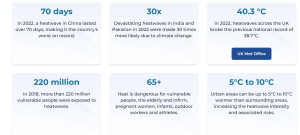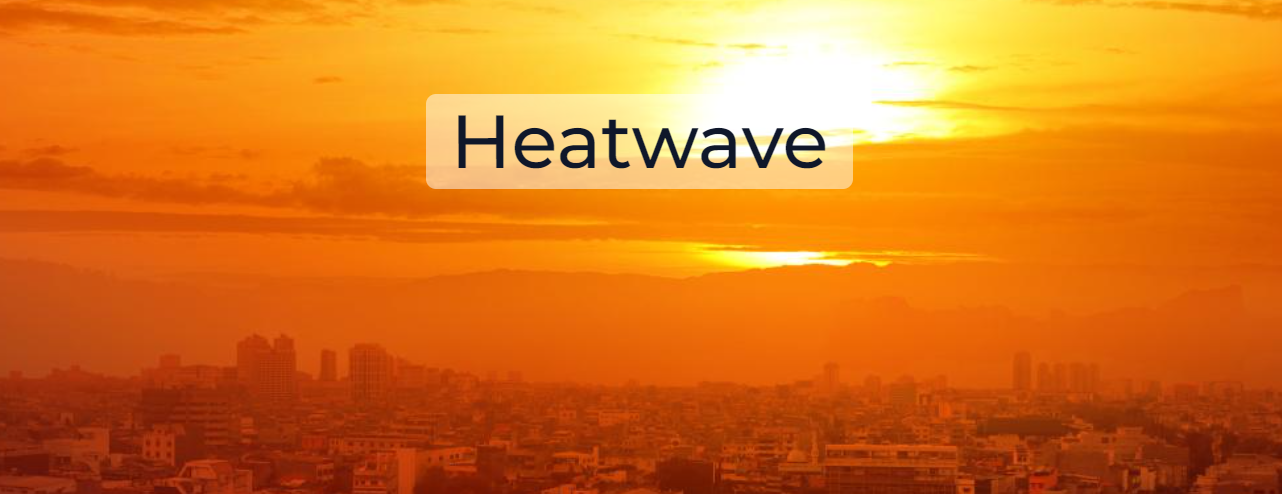A heatwave can be defined as a period where local excess heat accumulates over a sequence of unusually hot days and nights.
Heatwaves amplify many risks, such as health-related or economic risks, including increased human mortality, drought and water quality, wildfire and smoke, power shortages and agricultural losses.

Overview
Heatwaves consist of period of abnormally hot weather that can last from a few days to months where the maximum and minimum temperatures are unusually high to a location. The minimum temperature is as important as the maximum temperature as cooler nights allow the body to recover and if the nights are unusually hot, higher temperatures will be reached earlier in the day and last for longer.
Heatwaves have spread rapidly into new regions of the globe and occurring at unseasonable times of the year. The IPCC states that with further global warming, we can expect an increase in the intensity, frequency and duration of heatwaves.
Multiple risks interact with heatwaves such as droughts, fire weather, flash flooding and air pollution which have compounding impacts for people and nature.
Impact
Heatwaves are one of the most dangerous natural weather hazards. Intense heatwaves can pose serious health, social, environmental, and economic risks.
According to a study in 2022, in Europe alone, it was estimated that over 60,000 people died from heat-related stress.
Heatwaves impact human health and well-being, public safety and infrastructure, and the natural environment. Hot extremes including heatwaves have intensified in cities, where they have also worsened air pollution events and limited functioning of key infrastructure.
Broader adverse impacts include:
- Agriculture productivity
- Labour productivity
- Water sanitation
- Critical infrastructure damage
- Wildlife and animal deaths
- Biodiversity
- Outdoor exercise and exposure
Globally, population exposure to heatwaves will continue to increase with additional warming, with strong geographical differences in heat-related mortality affecting those with the least resources and without additional interventions and adaptation.
Heatwave intensity varies. Most people can generally manage during low-intensity heatwaves, but as heatwave intensity increases, vulnerable people and people with pre-existing conditions need a warning to protect themselves.
WMO’s response
WMO fosters international cooperation on characterising and sharing heatwave information and works to verify record-breaking temperatures.
WMO collaborates and works closely with its National Meteorological and Hydrological Services (NMHS) members to increase prediction skill, and to modernise early warning systems against extreme events including heatwaves so that countries can coordinate and implement heat action plans that enable effective action at the local community level.
The publication of heat-health warning (WMO-No.1142), developed jointly by WMO and WHO provides practical guidance in addressing human health impacts and warnings associated with extreme heat, including heatwaves.
WMO co-sponsors the Global Heat Health Information Network as a key mechanism for partnership, knowledge brokering, user engagement and collaboration.
SOURCE: 
Click here to view original article.

